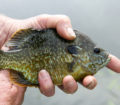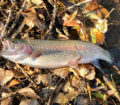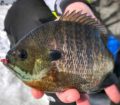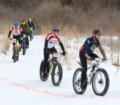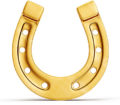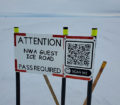By Steve Weisman

(photo by Steve Weisman) Mitchell shares his expertise on Advanced Trolling Tips during the recent Sioux Falls Sports Show.
Not long ago, I attended the Sioux Falls Sport Show and enjoyed listening to Jason Mitchell’s seminar entitled “Advanced Trolling Techniques.” According to Mitchell, trolling crankbaits is just one of many presentation that anglers need to have in their “tool box. Just like a carpenter needs to have all of his tools to use in the right situation, anglers need to do the same thing.” Mitchell then shared specifics about one of those presentations: trolling crankbaits.
He continued, “At one time, we used to think that you only pulled crankbaits when the water warmed up. However, I’ve grown to believe that trolling crankbaits can work anytime during open water. I have found it to be a really great search presentation even right at ice out.”
Choosing the right presentation is definitely about efficiency. For instance, if you don’t know for sure where the walleyes are located, trolling crankbaits can help cover more water more quickly until you find the fish. “If the fish are scattered in a big area, the more water you can cover, the more fish you can reach. What we are doing is sampling water and eliminating the dead water. Once you find the fish, we can then determine the type of presentation we should use to catch the most fish.”
If the fish are scattered, Mitchell will continue to pull crankbaits, because it is the most efficient way to find the fish. When a pattern emerges, Mitchell can then follow the trail and eliminate the dead water. If, however, the fish are in a small area, maybe stacked along a ledge, along the end of a point or maybe below a school of baitfish. At this point, Mitchell will then determine the type of presentation that will catch the most fish. For instance, he might turn to a jig and use the trolling motor to hold the boat right above the fish. Again, it’s all about efficiency. “Plus, when you have too much structure, it’s tough to pull crankbaits to keep them at the depth you want.”
When it comes to trolling crankbaits, Mitchell believes it’s way more than just putting out some line and trolling. It’s about efficiency and calibration. Today’s electronics help anglers find not only structure but also fish. “Use your electronics to find suspended fish or maybe arcs on the bottom with baitfish above them. At this point, you want to troll above the walleyes where the baitfish are located.” It is here that Mitchell relies on linecounter reels to help him determine the amount of line needed to troll the crankbaits at the right depth. Linecounter reels help determine what depth to run the baits. However, it is important to keep everything the same. For instance, Mitchell recommends making sure the spools are filled the same on all of the reels.
Mitchell says with a smile. “I take mine out in the backyard and let line out to see how closely each one is to being the same. You can’t run crankbaits the same depth, if you are using different types of line on each reel or if you aren’t running the same depth back.” It even comes down to length of rod and the angle and direction the rod holders are placed. Such subtle little things can make a huge difference. It is often the reason that one crankbait out produces all of the others.
Mitchell also recommends fine tuning the crankbaits. “I think this is probably more important than the color. I will pull the crankbait next to the boat at three miles per hour. The crankbait needs to run true. You can work to adjust the crankbait, but don’t grab the eyelet with your pliers and bend. It can make it run even worse.”
Mitchell will run two rods directly out the back of the boat, while putting longer rods out the side with line attached to Planer Boards “because they help spread the crankbaits out. As the season progresses, the movement of the boards in the wind can trigger bites.” At the same time, Mitchell advises not to use too stiff of a rod “because you want to be able to see what is happening. Plus, too stiff of a rod will lead to more missed fish.”
Above all, Mitchell stresses to keep the baits debris free. “Trolling crankbaits is not about just sitting back and trolling. It’s about watching everything, the rod tips, the planer boards, the water above the crankbaits. It is important to watch for anything that is different, like the plugs becoming fouled. Keep the lures debris free! When heavy algae blooms come, I find it extremely difficult to troll crankbaits. The algae will build up on the line and eventually slide down to the lip of the crankbait. Instead, I will go to bottom bouncers and spinners, because the bouncers can handle the algae better.”
Mitchell adds that anglers all have their favorite colors. However, he believes that it is the crankbait and its movement that makes the biggest difference. Likewise, he goes with smaller crankbaits in the spring and much larger by fall.
Give crankbaiting a try, but whatever type of fishing you do, make sure that efficiency is a big part of your game plan!


